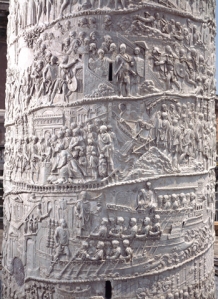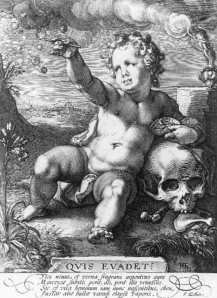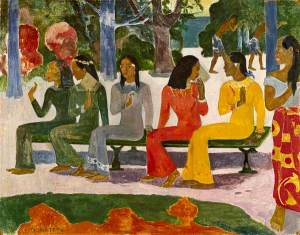It ’s been already 4 hours that I have been fighting with my computer. Ok, so this isn’t funny, ironically, not only I have a Trojan, but a great deal of barbarians charging against my computer. Something like the Dacians threatening the roman frontiers during the first century a.C., this is how our story begins: Trajan and I fighting, displaying all of our infantry and forces against those who threaten us and our peace.
’s been already 4 hours that I have been fighting with my computer. Ok, so this isn’t funny, ironically, not only I have a Trojan, but a great deal of barbarians charging against my computer. Something like the Dacians threatening the roman frontiers during the first century a.C., this is how our story begins: Trajan and I fighting, displaying all of our infantry and forces against those who threaten us and our peace.
I would like to add that besides my little viral inconvenience, this racconto is especially difficult for me since it would be a real feat to outdo my source, the great Lino Rossi and his excellent translator; his detailed explanation of everything related to the Column in “Trajan’s Colum and the Dacian Wars” has moved me to tears (always so inopportune, Ana, the library is simply NO place for that!). Therefore, this article will humbly try to pay the book homage.
Let’s place ourselves in front of a 100 ft. tall cylinder. It’s colorful, decorated with gold and bronze; 17 marble cylinders superimposed on a square base of 17 ft on each side. In one of them, a door takes us into the chamber in which we find the golden urns of Trajan and his wife, Plotine. Inside the interior conduct, a staircase lit by 43 small windows leads us to the top, where Trajan’s bronze statue is. It is the year 113 a.C. and this marvelous piece was built in memory of and as homage to Rome’s triumph over the Dacians and Rome’s conductor: Trajan.
If we take a closer look, we find that this wants to tell a story. In a spiral way up to the top we see that we are being told about how Trajan led Romans to victory against Dacia during the 101-106 a.C wars. Like a comic or a storyboard, we shall follow this story like a film roll. It isn’t necessary to know how to read or write to follow a story told through images, right? Do you see where I’m getting at? This is accessible to all!
The wars: Towards the end of the first century, Rome’s military power and civil evolution had reached  its peak. The story illustrated in the Column is centered in Dacia’s fairly large territory, beyond the Danube’s curse (part of actual Romania), inhabited by diverse ethnic groups like the German, Sarmatian or Tracian; barbarians to Romans’ eyes; but not so much in reality, as their national pride, gallantry, organization and economical activity inferred. Regarding religion, and if I may, this is the most interesting part, they worshipped the god Zamolxis, practiced orgiastic and secret rites (including human sacrifices) and believed in heavenly life as a reward to those warriors who gave their life for their country. Death was then sometimes voluntarily encountered by those warriors who refused to surrender, recurring to both individual and massive suicides.
its peak. The story illustrated in the Column is centered in Dacia’s fairly large territory, beyond the Danube’s curse (part of actual Romania), inhabited by diverse ethnic groups like the German, Sarmatian or Tracian; barbarians to Romans’ eyes; but not so much in reality, as their national pride, gallantry, organization and economical activity inferred. Regarding religion, and if I may, this is the most interesting part, they worshipped the god Zamolxis, practiced orgiastic and secret rites (including human sacrifices) and believed in heavenly life as a reward to those warriors who gave their life for their country. Death was then sometimes voluntarily encountered by those warriors who refused to surrender, recurring to both individual and massive suicides.
This shows us what kind of determined and brave army the Romans were to encounter during their campaigns.
Since the year 85, the Dacians represented a constant threat to the northwest lime of the Roman empire; and successive battles over the course of 15 years left the Roman power very wounded; this is, until Trajan realized that diplomacy was no longer the way and decided to declare war. In doing so (and winning) he put his best qualities as a commander and organizer, political leader and economic planner in display, which made him big.
I would like to focus on the fact that this Column should be observed under the perspective of a great celebration to the army; whose emperor dedicates “to the memory of the bravest of men who died for the Republic”. They are the heroes in this story, and not the drama per se; which is noticeable due to the almost excessive richness in the depiction of the scenes where civil engineering and military works take place, as opposed to those in which battle is actually represented.
The Column has 23 spirals, each containing an average of 7 scenes. I will not deepen in the details, but I would like to share some highlights that caught my attention as I summarize –a lot- the story told.
 It is March of 101 and the Romans get ready: they disembark and start their civil engineering labors at the enemy’s frontiers; then they proceed to move forward under the personal commandership of Trajan, without encountering any Dacian opposition yet, who has faked a retreat. Finally the first war prisoner appears, and after further advances and settlements in enemy areas, at the gates of Bistra valley, the roman expeditionary forces reunite and face the enemy in battle, which is won thanks to Thunderer, who creates a storm that forces the Dacians away to a fort surrounded by stick with Romans’ heads at their tips, possible earlier captives –remember these peoples are Vlad III’s forefathers; the great impaler, better known as Dracula-, dragons and other demons. In Rome’s part of the Danube another battle breaks out, where roman soldiers appear to be badly wounded and assisted by Greek doctors; interestingly, this is the only scene where non-Romans are being shown doing technical work. Trajan, with his troops reassembled, moves on to another battle point where he once again defeats his enemy, who retreats to the woods.
It is March of 101 and the Romans get ready: they disembark and start their civil engineering labors at the enemy’s frontiers; then they proceed to move forward under the personal commandership of Trajan, without encountering any Dacian opposition yet, who has faked a retreat. Finally the first war prisoner appears, and after further advances and settlements in enemy areas, at the gates of Bistra valley, the roman expeditionary forces reunite and face the enemy in battle, which is won thanks to Thunderer, who creates a storm that forces the Dacians away to a fort surrounded by stick with Romans’ heads at their tips, possible earlier captives –remember these peoples are Vlad III’s forefathers; the great impaler, better known as Dracula-, dragons and other demons. In Rome’s part of the Danube another battle breaks out, where roman soldiers appear to be badly wounded and assisted by Greek doctors; interestingly, this is the only scene where non-Romans are being shown doing technical work. Trajan, with his troops reassembled, moves on to another battle point where he once again defeats his enemy, who retreats to the woods.
Here, the juxtaposition of the following scenes are worthy of mentioning: while after the Dacians’ retreat we see a celebrating and thankful Trajan, with a sort of ‘concentration camp’ on the background, right next to it we find a village where Roman soldiers are being tortured by women, confronting thus the joy and reward depicted in the first one and the pain and humiliation of the second; displayed like this to represent the changing and unpredictable fortunes of men at war.
Spring of 102, the third war campaign begins. The Romans attack and the Dacians back away lead by Decebalus, who agrees to a truce but is planning revenge at the same time, as we can see from the images of his people whispering in a conspirational way through the woods as they leave. Nevertheless, the Romans, oblivious of this situation, celebrate victory once again, the winged victory also being a part of the celebrations.
After two years of peace the last war begins; the Romans are about to be defeated by Decebalus until Trajan pulls out a Schwarzenegger and appears in the scene to save the day; in the summer of 106 the main Dacian city is besieged and its citizens finally surrender. Those who don’t, in a last desperate attempt to save their dignity, set fire to the buildings left and commit suicide, according to Zamolxis’ precepts. Decebalus manages to escape. Following him, the Romans continue to move forward a nd come across three Dacian detractors who tell them where their leader’s treasure is. In the end, Decebalus charges one last time unsuccessfully in October and ends up killing himself at his enemy’s feet by plunging a dagger into his throat.
nd come across three Dacian detractors who tell them where their leader’s treasure is. In the end, Decebalus charges one last time unsuccessfully in October and ends up killing himself at his enemy’s feet by plunging a dagger into his throat.
The last scene shows the rest of the villagers (men, women, children) leaving their homeland, taking their cattle, proudly looking back for one last time; as homage to the innocents and their fortunes in times of war.
The Column is an actual panegyric to those involved in wars. Whereas Trajan is represented as an omnipotent figure –always leading- this monument is built not only for him, but for all who participated in this gigantic undertaking; to all who were brave and gave their life for pride and others.
Seen from the XXIst century this idea might seem ridiculous –even though we still suffer from this disease-; but it wasn’t. National pride is what brought (these) people together, and what the Romans accomplished, even more under Trajan’s guidence. I know, this is a very romantic view, but, dreamin’ don’t cost a thing. It is about ‘unity’, keeping one’s head high and recognizing those who give life for others and those others’ own fortunes of having been defended.
Smart cookie, this Trajan. He did not invent this type of propaganda, but he did a hell of a job on this one. There’s blood running through the grooves of the column, but its beauty and impressiveness is undeniable.
There is nothing left to do but to join this eulogy and succumb to its transcendental and timeless beauty.
Tags: Bronze, Campaign, Column, Dacia, Dacians, Danube, Decebalus, Empire, Homage, Lino Rossi, Panegyric, Plotine, Rome, Siege, Trajan, Trajan's column, War, Zamolxis















